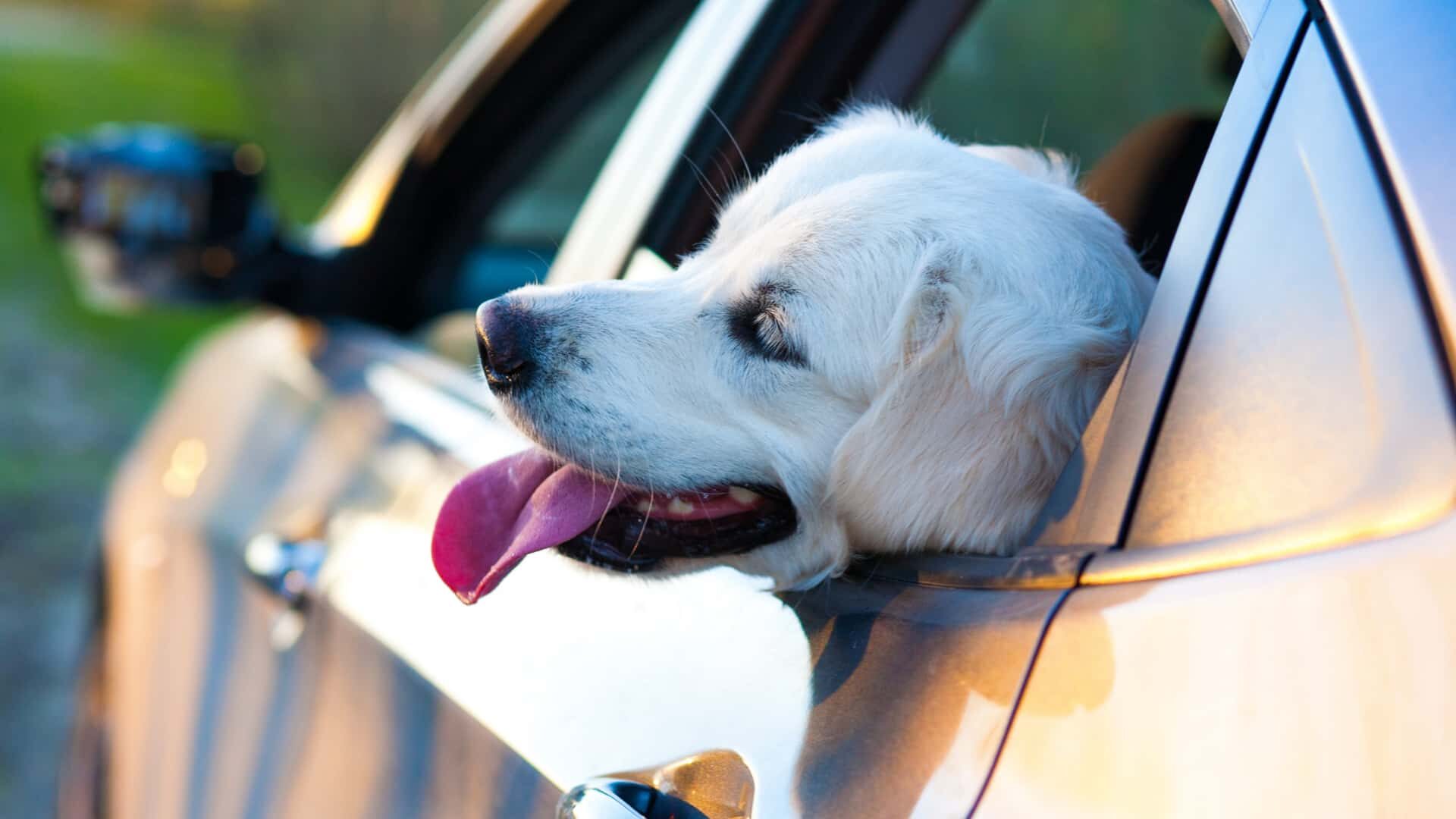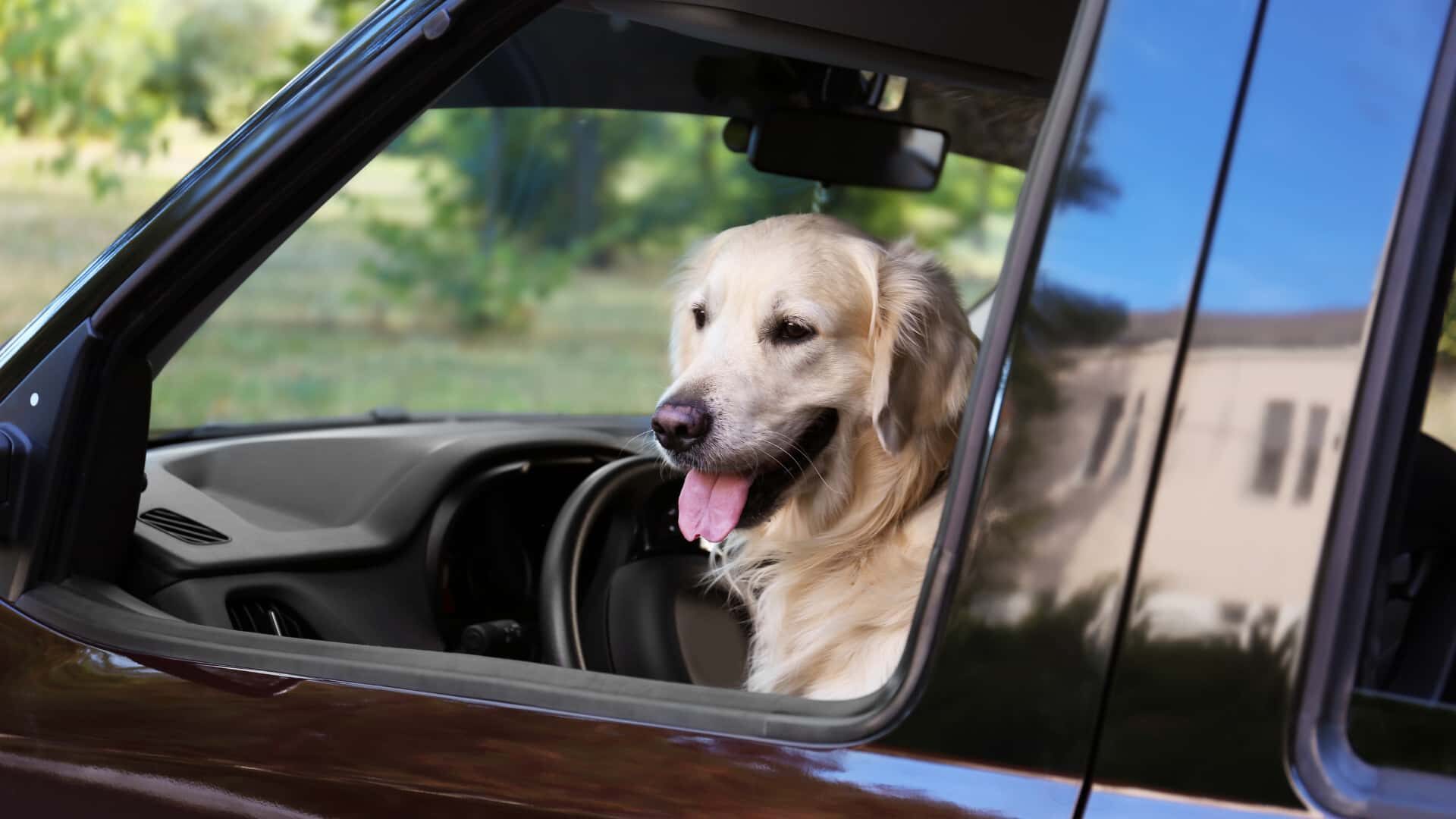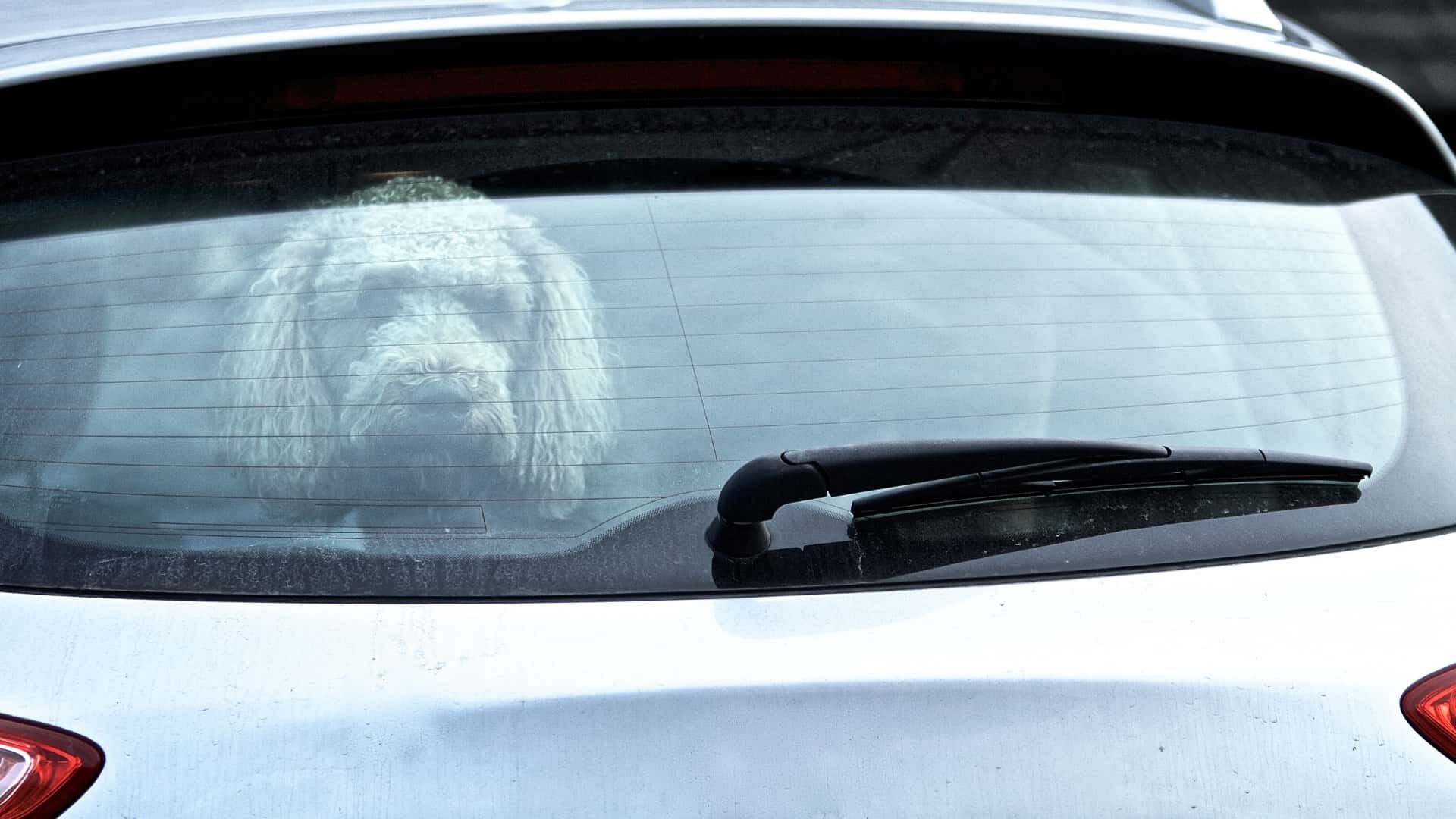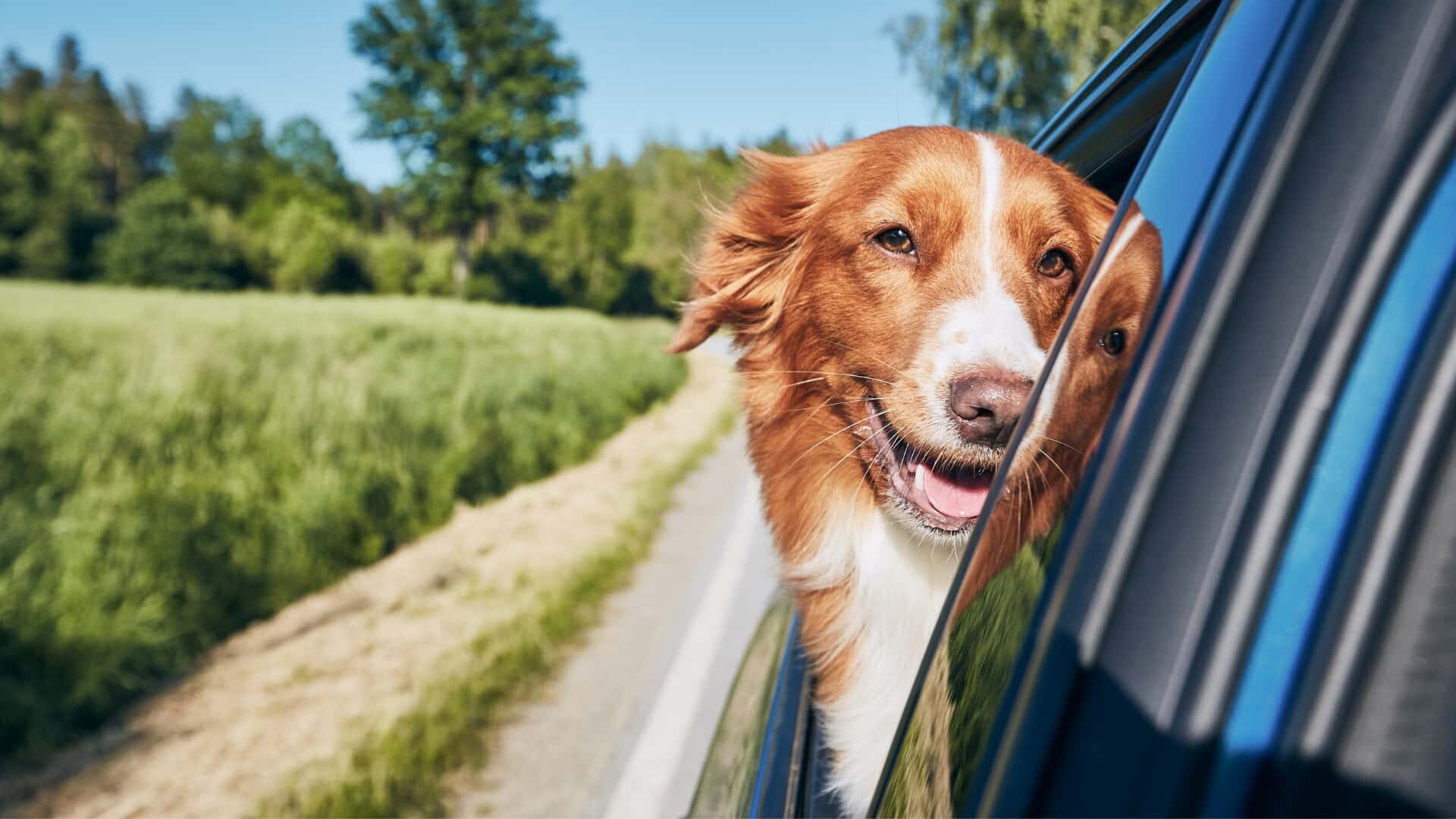Have you ever noticed your dog starting to whine after getting in a car? If so, you’re probably worried about what could be causing your dog whine in the car.
Even though you could think that your dog is whining due to the happiness or excitement of your dog going out, it just might not be the case every time. There could be multiple causes for your dog to whine in the car, further discussed in this article.
What is wrong with dogs who whine and cry in the car?

Whining is one of the various ways dogs communicate their mental and emotional states. However, unlike whining at home, which can be caused by a variety of factors such as a need for more treats, being let out for a wee, or communicating that he’s bored or in discomfort, whining in a car can mainly be attributed to one of two factors: excitement or nervousness.
While restless, high-pitched whines are frequently due to enthusiastic excitement, and it’s also likely that he’s becoming worried and afraid. This is especially true if his usual car travel includes a trip to the vet, groomer, kennel, or any other location where they would be separated from you.
What are the reasons behind dogs whining in the car?
Whining or whimpering inside a car is a regular occurrence for many dogs, and it can be annoying and stressful for the driver. Crying could be caused by fear or anxiety associated with travel. Travel sickness, impatience, worry, and even previous unpleasant experiences with automobile rides could all lead a dog to whine. Below explained are a few reasons why your dog could be whining in the car.
1. Your dog is in a state of agitation and frustration.
Since a car is a relatively confined space for a dog, there is a possibility of your dog experiencing stress. Your dog may be experiencing anxiety and frustration because of the cramped conditions of a car on long journeys.
You could try opening the windows and allowing them to look outside for entertainment. You may also want to bring some of your dog’s favourite toys along for the ride, as this will help distract him from the vehicle itself.
2. Your dog has a problem with travel sickness.
Your dog may feel ill from motion sickness while in the car with you. According to research, dogs and people are almost the same whenever it comes to motion sickness. Your dog’s stomach may be upset as a result of travel sickness.
Dogs can suffer from travel sickness, so open some fresh air. Moving your dog forward so they can see out the front windows is another option. If your dog is experiencing symptoms of travel sickness, your veterinarian may be able to prescribe medicine to alleviate the problem.
3. Your dog cannot cope with their new environment.
It can sometimes be easier to figure out why your dog is whimpering or weeping in the car. Your dog may be overwhelmed by the new odours and images and unable to cope with their new, unfamiliar environment.
4. You have made it a habit for your dog.
It’s a compulsion he’s developed, which has gotten worse with time. It has no rationale or basis. The dog feels it’s being praised for its lousy conduct because of acts like holding and soothing. You could try using the dog’s love of sitting on people’s laps as your goal. If the dog wants to sit on people’s laps, it needs to learn that being quiet is a prerequisite.
How to cure dogs whining in the car?

How you handle your dog’s whining will depend on the source of his whining. While dealing with your dog, always have a partner to either drive a vehicle or execute the training. If you attempt to train your dog while driving, the consequences might be disastrous. Below is a step-by-step guide to stopping your dog from whining in the car.
1. Show your dog to the veterinarian.
Schedule an appointment for your dog to see the veterinarian and clear out any potential health issues. When a dog becomes aroused, it could urinate or defecate. Your veterinarian will do testing to ensure the dog is free of problems like urinary tract infections or potential parasites.
2. Keep your dog accompanied.
Give the dog their favourite toy to keep the dog engaged in the car. Whining is a sign of restlessness, and an exciting toy will keep your dog quiet during the drive.
3. Introduce a diet.
Put the dog along with a low-fat, low-protein diet. Most dogs are generally lively, and higher protein and fat content add extra calories, leading to excessive energy. To avoid intestinal distress, carefully transfer your dog from one sort of food to another.
4. Allow your dog to exercise.
Allow plenty of movement for the dog during the day. Urge the dog to run around and play in a safe, open place because most dogs have excellent herding tendencies and enjoy chasing objects. To persuade the dog to move his legs, toss a ball or another preferred toy.
5. Provide snacks to your dog on the road.
Give your dog a special reward to divert their focus away from the road. An additional reward is an excellent technique to shift focus away from the ride. A bonus treat serves as positive encouragement for your dog, associating the automobile ride with snacks and good experiences.
6. Let your dog be safe when leaving the house.
Whenever you leave the house, make a safe space for your dog. Choose a small area, such as a spare room or a playroom, and put the dog’s bed and toys and his crate, if he does have one, within.
And when you’re gone, the dog can roam and play in this safe space without having free reign of the house. To avoid an escape, close the door securely as you depart. Most dogs are naturally curious and can become bored if left alone; locking the entrance will keep the dog and your house secure until you return.
7. Adjust your dog’s environment smell.
Bring some of your unclean clothes into the room. Soft T-shirts and sweaters, for example, retain your aroma longer once you’ve discarded them, and your scent will encourage the dog to relax. Most dogs are mouthy species that may chew if bored, so choose old clothes that you don’t mind losing if they are ruined.
8. Look for natural herbs.
In excessive restlessness or anxiety issues, think about adding a soothing herbal solution to your dog’s diet. The MRD1 gene found in most dog breeds might cause severe and frequently fatal interactions with sedatives commonly recommended for hyperactivity.
Herbal supplements and other substances in soothing herbal supplements increase the production of natural hormone sources, which helps relax your dog even without risks related to prescription tranquilizers.
What to do to stop dogs from whining and crying in the car?
A dog that regularly whines inside a car would be not only unpleasant but can also be hazardous, as the dog’s sound and distress disturb the driver. Below are some of the most recommended tips to stop your dog from whining and crying in the car.
1. Stay calm inside the car.
Stay relaxed and calm inside the car. It may seem obvious, but the more stressed you get, the further likely your pet is to whimper. Put on your preferred soothing tunes to lighten the mood if you become tense or disturbed while driving.
2. Secure your dog in the car.
Before going on your journey, but the dog in his crate or secure him with a safety belt clip. If your dog is not secured to the seat correctly, it might be harmed or killed in the event of an accident.
Limiting him also provides him with a sense of safety, which may reduce whining on the journey. As unfamiliar odours and situations might be overwhelming for some dogs, covering the crate is an excellent choice. The crate cover is also beneficial since it offers comfort and security, assisting in soothing and resting your dog.
3. Use a quiet command.
To reduce whining in the car, train your dog in calm instructions. Place the dog in the vehicle and take the wheel. Keep a few snacks in your hand and give them to him as soon as he begins to whine. In a stern voice, instructing him to “quiet.” Compliment him and offer him a snack when he calms down.
The silent command’s effect only succeeds if the dog understands he earns a reward for being quiet; therefore, you must treat him right away. If the dog persists in whining, deliver the order again, rewarding him just when he quits whining.

4. Increase your dog’s anticipation.
Change things if he thinks you’re headed somewhere enjoyable (or terrible). Put another way, take them to different places and give them diverse experiences so he doesn’t have a preconceived notion of what to anticipate. If his automobile journeys take him to the veterinarian, broaden his horizons to include more enjoyable trips.
5. Prioritize short journeys.
Since your dog hasn’t had much expertise traveling in cars, he might whine while being in the car. Take numerous rides to calm his nerves and show him that going for car rides isn’t such a big issue. Get him loaded, drive around the block, and then get out. Keep your trips quick and pleasant by not taking the same path every time.
6. Check for motion sickness frequently.
Your dog will most likely whine if he is unhappy in the vehicle. Motion sickness is among the reasons many dogs are uncomfortable in the car. Due to the immaturity of the ear canal, motion sickness is rather prevalent in puppies.
Your dog should grow out of motion sickness as he ages. If he doesn’t, you can seek treatment from your veterinarian, prevent feeding him shortly before car travels, and attempt to maintain him quietly, as agitation will exacerbate the effects.
How to teach the “be quiet” method to your dog?
1. Keep snacks ready to give out treats.
Get a few snacks on hand when driving, store them in an easily accessible jar, or have a helper ready to offer them. Anything that isn’t within his grasp.
2. Command saying “be quiet.”
Say “be quiet” in a stern voice once your dog begins to whine. If your dog persists in whining, don’t scold or discipline him because this will make things worse. Overlook him and restate the ‘be quiet’ instruction after a few minutes.
3. Award your dog for listening.
Provide the reward and repeat “be quiet” once your dog stops whimpering, even if only for a time, to reinforce the vocal order.
4. Repeat this training.
Praise your dog for being silent for increasingly extended amounts of time each time. Give him a reward when he replies positively. Never acknowledge or reward whining.
5. Start praising and petting additionally.
Replace treats with attention and praise in exchange for staying silent.
Watch How to calm a nervous dog in the Car | Video
1. What’s the deal with dogs whining in cars?
If your dog whines in the vehicle, he may have a love-hate connection with the car, determined mainly by what occurs when he rides in it. Whining in dogs in vehicles might be prompted by the expectation of something that the dog dislikes or something he is looking forward to.
Yes, since stress may be either beneficial or harmful. Dogs, unlike humans, do not participate in self-talk; thus, they are saved from the frequently unreasonable “what ifs” that we humans load ourselves with when anticipating something threatening.
2. How could I calm my dog down in the vehicle?
Before the trip, restrict your dog’s water and food intake for several hours well. Ask your veterinarian about motion sickness or anti-anxiety medicine. Exercise your dog around 20 minutes ahead of your travel to reduce stress. Spray dog pheromones in your vehicle.
3. What could I do to make my dog feel relaxed in the car?
Give your dog a few snacks, chat with it in a cheerful voice tone as fast as the vehicle starts, and then switch off the engine. Rep this procedure multiple times until your dog is entirely at ease in the vehicle with the engine going. Start with short outings. Make sure your dog’s initial car ride isn’t a long one.
4. Why does my dog hyperventilate in the car?
When your dog is panting profusely in the vehicle, it’s essential to give attention. The pet’s body cools down by exchanging the hot inner air for cooler external air. Because dogs do not sweat like humans, panting is their primary cooling method.
5. Where should I seat my dog in the car?
A crate or a safety belt and collar combination are the safest ways to transport a dog in a car. Your dog should never be in the front seat, regardless of your method; instead, secure them in the cargo compartment or rear seat beneath a front seat.
Conclusion

This article was focused on explaining why your dog might be whining or crying inside the car while traveling. Further, the article also discussed a step-by-step guide to curing your dog’s whining in the car, along with tips to stop your dog from whining in the car. The article also includes a FAQ section for common questions regarding dogs whining in the car.
Stay tuned to our site to explore more interesting articles. Do not forget to check out and read our previous articles.
Bottom up
Please comment below about your ideas and share this “Why Does My Dog Whine While in the Car: Guide to Stop” article with your friends.
Stay tuned with our website to find out more exciting stuff. Don’t forget to check out our previous articles too.
Until the, Read about, How to Treat Your Dog with Constipation at Home: 12 Remedies






